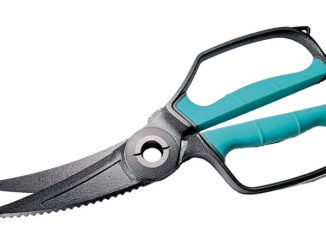
According to Einstein’s Theory of Fishing Relativity, the observer in his spatial frame of reference — be it Florida, Texas or South Carolina — will always think he’s got the best fishing. Each year I attend several fly fishing expos and conclaves where speakers talk on a variety of subjects. Occasionally I drop in to hear about opportunities that exist elsewhere.
A couple years back, Master Jake and I attended such a program on fly fishing for reds in the coastal South Carolina “Lowcountry.”
Now, we were thoroughly enjoying this program, as the speaker was enthusiastic and the method of stalking reds over there was somewhat unique. But toward the end, his enthusiasm may have gotten the better of his judgement. He paused for a moment, then elocuted a declaration.
“We in South Carolina have some of the finest shallow water fly fishing anywhere. Our Lowcountry is the redfish capital of the United States.”
Perhaps in his space-time continuum, South Carolina is the best redfish spot in the nation. I’m fairly certain it’s not the space-time continuum the rest of us are living in.
It gets better. He explained his reasoning.
“On a good day, we’ll hook five or six reds; I’ve even had as many as a dozen on a few trips.”
Jake’s patented ear-to-ear smile told me he had definite thoughts about this brewing in his mind.
“A dozen? Did he say a dozen?”
“Yep, that’s what he said alright.”
“Should I tell him about the time I caught 40 and then lost count?”
“No, not a good idea. It’s best we keep it our little secret.”
Louisiana’s fly fishing wealth has long been a well-kept secret. Even as I write this, before me sits a popular fly shop catalog that lists ‘Texas Redfish’ among the top species destinations.
Anywhere you go, even here, catching five reds on fly rod is still a good day indeed. But for the possibility of a “redfish bonanza,” that rare trip where 20 or more reds are hooked on fly, nothing comes close to our own state.
The evidence speaks for itself.
According to publications by the U.S. Fish and Wildlife Service, Louisiana’s recreational landing of red drum is roughly twice that of Texas, and five times that of Florida’s Gulf Coast.
Almost to a man, the redfish tour pros testify that Louisiana is the easiest place to catch reds. One astonishing example: During the 2002 Ranger/Mercury Tour at Hopedale, as Tropical Storm Hanna beared down on the northern Gulf, 83 out of the 100 teams produced a two-fish limit despite coping with winds of 25 to 30 knots!
As more folks come to recognize what we have to offer, the result has been an explosion of flyfishing redfish guides on our coast. Not just those who advertise such, but those who can proficiently cast a fly rod and show others how to do so, who carry fly tackle on their boat for customer use, and who use shallow-water craft to sight for the Spottail Elvis.
I’m not guaranteeing that if you book a native redfish guide you’ll catch a whole lotta redfish. Nothing is certain in life except death and taxes. Much depends on the guide, conditions, time of year and, most important, skill of the angler. If you’re a poor caster, such a feat becomes difficult if not impossible.
But if John Smith from Michigan offered me a million pesos to put him on a redfish bonanza, my first action would be to hook him up with a seasoned guide.
Those attempting to do it on their own need to be aware that they can “make their own luck” by using the right equipment and planning for the right place and time.
Big numbers of reds can be found at tidal passes, on the edges of lakes near tidal cuts and anywhere a complex of ponds exist. For fly-rodders, a shallow-water boat that can be poled, or paddlecraft such as canoe or kayak, is needed to be successful in the latter two environments.
The time of year is important. A number of our “quit counting” days with reds have occured in late fall and early spring. At these times, tide levels and water temperatures are moderate and suitable to holding and keeping fish in ponds and on edges of lakes.
In spring — usually April and May — there is a significant amount of grass to hold shrimp, small crabs and baitfish. The grass also filters the water, making it quite clear, and we all know the benefits of that.
The other opportunity comes in the dead of winter, after cold fronts, when reds congregate in deeper waters. One friend of mine caught so many like this that his rod stayed in a bend for several days after his trip!
The right flies are equally important. If you happen to be a traditionalist who believes that spoon flies don’t belong in a fly box, then it’s safe to say you’ll never inherit my nickname. Folks who like to “catch” know that the spoon fly — in any of its numerous variations — is the absolute best way to put reds in the boat.
Poppers, Charlies, Clousers and baitfish patterns all work well at times. We’ve had a few 30+ days on poppers alone. But those were days when conditions were calm and overcast, water was clear and the reds were thick and stupid. Such days are about as rare as Hollywood Republicans.
Folks who advocate traditional patterns are quick to argue that bigger reds prefer those flies. I wouldn’t disagree, but again, I’m talking numbers. If you want to keep your rod busy, best to have a good supply of spoons on hand.
For those who love to fling flies to the poisson rouge, Louisiana is paradise. Take advantage of it now, before hot weather settles in and a typical day on the water becomes nothing more than just a great day elsewhere.


